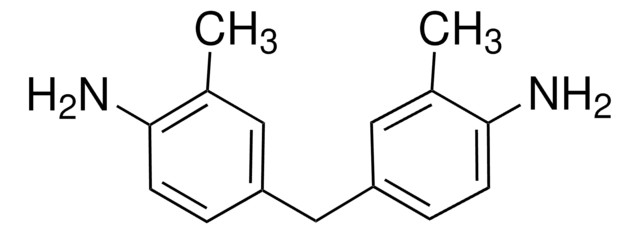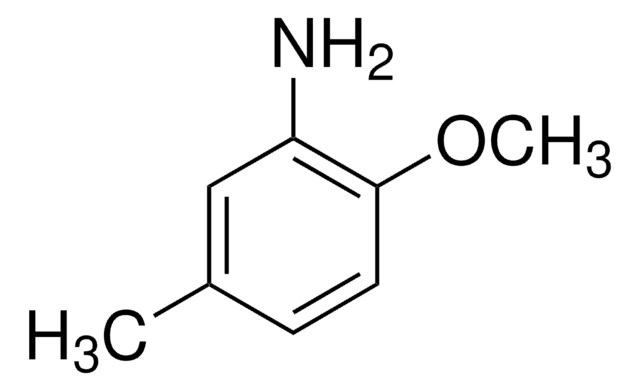おすすめの製品
グレード
analytical standard
シェルフライフ
limited shelf life, expiry date on the label
テクニック
HPLC: suitable
gas chromatography (GC): suitable
bp
202-214 °C/0.3 mmHg (lit.)
mp
102-107 °C (lit.)
アプリケーション
environmental
フォーマット
neat
SMILES記法
Nc1ccc(Cc2ccc(N)c(Cl)c2)cc1Cl
InChI
1S/C13H12Cl2N2/c14-10-6-8(1-3-12(10)16)5-9-2-4-13(17)11(15)7-9/h1-4,6-7H,5,16-17H2
InChI Key
IBOFVQJTBBUKMU-UHFFFAOYSA-N
類似した製品をお探しですか? 訪問 製品比較ガイド
詳細
アプリケーション
- Urine samples by high performance liquid chromatography (HPLC).[2]
- Textile samples by HPLC coupled to tandem mass spectrometry (MS/MS) equipped with multiple reaction monitoring (MRM) mode of detection.[3]
- Plastic multilayer food packaging materials by LC-Orbitrap-full scan-high resolution mass spectrometry (HRMS) equipped with electrospray ionization (ESI) source.[4]
その他情報
おすすめ製品
シグナルワード
Danger
危険有害性情報
危険有害性の分類
Acute Tox. 4 Oral - Aquatic Acute 1 - Aquatic Chronic 1 - Carc. 1B - Muta. 2
保管分類コード
6.1C - Combustible acute toxic Cat.3 / toxic compounds or compounds which causing chronic effects
WGK
WGK 3
引火点(°F)
235.4 °F - closed cup
引火点(℃)
113 °C - closed cup
個人用保護具 (PPE)
Eyeshields, Gloves, type P3 (EN 143) respirator cartridges
適用法令
試験研究用途を考慮した関連法令を主に挙げております。化学物質以外については、一部の情報のみ提供しています。 製品を安全かつ合法的に使用することは、使用者の義務です。最新情報により修正される場合があります。WEBの反映には時間を要することがあるため、適宜SDSをご参照ください。
労働安全衛生法名称等を表示すべき危険物及び有害物
名称等を表示すべき危険物及び有害物
労働安全衛生法名称等を通知すべき危険物及び有害物
名称等を通知すべき危険物及び有害物
Jan Code
66681-1G:4548173296159
66681-BULK:
66681-VAR:
66681-250MG:4548173296166
この製品を見ている人はこちらもチェック
アクティブなフィルタ
ライフサイエンス、有機合成、材料科学、クロマトグラフィー、分析など、あらゆる分野の研究に経験のあるメンバーがおります。.
製品に関するお問い合わせはこちら(テクニカルサービス)












